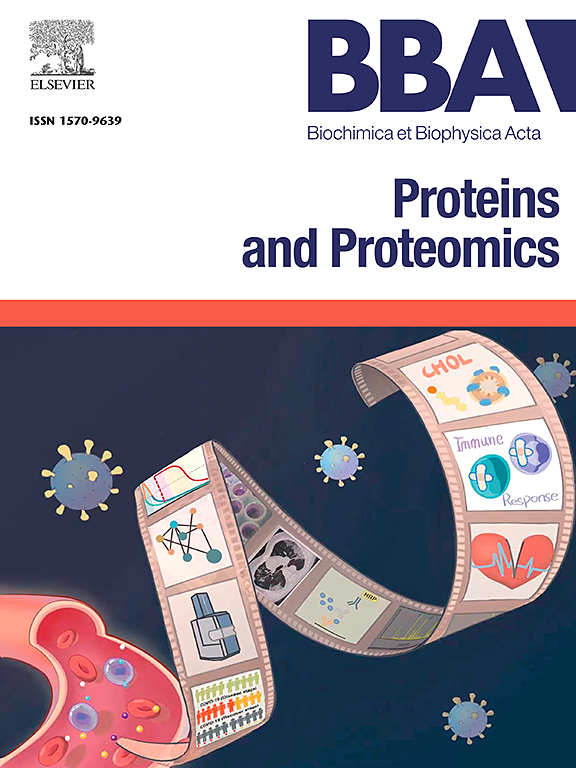小球藻RCC288对油厂废水适应过程中蛋白质组和转录组的进化
IF 2.3
4区 生物学
Q3 BIOCHEMISTRY & MOLECULAR BIOLOGY
Biochimica et biophysica acta. Proteins and proteomics
Pub Date : 2025-05-05
DOI:10.1016/j.bbapap.2025.141077
引用次数: 0
摘要
一些种类的微藻,包括小球藻,可以利用各种溶解的有机碳源,如糖和有机酸,进行生长。在光和这些有机基质存在的情况下,它们表现出混合营养代谢,将有机碳的异养同化与光合碳固定结合起来。在这项研究中,我们使用蛋白质组学和转录组学方法分析了小球藻在BG-11培养基中光养生长和在漆酶预处理的30%稀释橄榄厂废水(OMWWs)中混合生长时改变代谢的能力。使用UniProt、InterPro、KEGG Pathway和Gene Ontology数据库,分析了蛋白质组学和转录组学数据。在混合营养中,细胞周期、信号和运输蛋白以及伴侣蛋白的过度表达被发现,并与光合作用和碳水化合物/脂质代谢途径的总体减少有关。此外,还调节了光依赖性原叶绿内酯还原酶、苹果酸合成酶、乙酰辅酶a羧化酶和丙酮酸激酶的表达。令人惊讶的是,检测到铵转运蛋白的上调,这可能在OMWWs解毒中发挥作用。对铵转运蛋白三维结构的同源性建模研究表明,它具有一个具有长c端区域的功能性三聚体结构,可能参与了铵转运的调节和激活。本文章由计算机程序翻译,如有差异,请以英文原文为准。
Evolution of Chlorella sp. RCC288 proteome and transcriptome during its adaptation to oil mill wastewater
Some species of microalgae, including Chlorella, can utilize a variety of dissolved organic carbon sources, such as sugars and organic acids, for growth. In the presence of both light and these organic substrates, they exhibit mixotrophic metabolism, combining heterotrophic assimilation of organic carbon with photosynthetic carbon fixation. In this study, we analyzed using proteomic and transcriptomic approaches the ability of Chlorella sp. to shift its metabolism when it was grown in photoautotrophy in BG-11 medium and mixotrophy in 30 % diluted olive mill wastewaters (OMWWs) pretreated with laccases. Using UniProt, InterPro, KEGG Pathway, and Gene Ontology databasesproteomic and transcriptomic data have been analyzed. In mixotrophy, over-expression of cell cycle, signaling, and transport proteins, as well as chaperone proteins, were identified and associated with an overall decrease in photosynthesis and carbohydrate/lipid metabolic pathways. In addition, the expression of light-independent protochlorophyllide reductase, malate synthase, acetyl-CoA carboxylase and pyruvate kinase were modulated. Surprisingly an upregulation of the ammonium transporter protein, which could play a role in OMWWs detoxification was detected. Homology modeling investigation of the three-dimensional structure of ammonium transporter protein revealed that it holds a functional trimeric structure with a lengthy C-terminal region that may be involved in the regulation and activation of ammonium transport.
求助全文
通过发布文献求助,成功后即可免费获取论文全文。
去求助
来源期刊
CiteScore
8.00
自引率
0.00%
发文量
55
审稿时长
33 days
期刊介绍:
BBA Proteins and Proteomics covers protein structure conformation and dynamics; protein folding; protein-ligand interactions; enzyme mechanisms, models and kinetics; protein physical properties and spectroscopy; and proteomics and bioinformatics analyses of protein structure, protein function, or protein regulation.

 求助内容:
求助内容: 应助结果提醒方式:
应助结果提醒方式:


